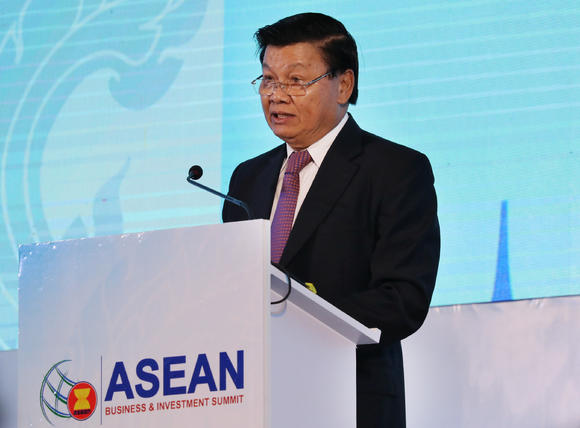VIENTIANE — A new economic order will emerge by 2030, with Southeast Asia taking on a central role, Laotian Prime Minister Thongloun Sisoulith told business leaders in his nation’s capital on Monday.
“Studies have shown that the ASEAN economy is expected to grow at 7% per annum, with a GDP reaching $4.7 trillion in 2020, and the possibility of becoming the fourth-largest economy in the world by 2030,” Thongloun said in his opening remarks for the ASEAN Business and Investment Summit (ABIS) 2016, of which the Nikkei Asian Review is a strategic media partner.
Laos, a landlocked country with borders touching Myanmar, China, Vietnam, Cambodia and Thailand, is this year’s chair of ASEAN, and Thongloun will host a leaders’ meeting in Vientiane from Tuesday. The Business and Investment Summit is a parallel event, with leaders and ministers making appearances to speak to the business community.
The ASEAN gathering comes nine months after the launch of the ASEAN Economic Community and one year before the association’s 50th anniversary. The theme that the Laotians have chosen for this year’s ASEAN events is telling: “Turning Vision into Reality for a Dynamic ASEAN Community.” This reflects frustration that the bloc is heavy on ambition but light on real progress toward economic integration.
To maintain its ambitious 7% growth target, the association will need to continue to strive for seamless movement of goods, services, capital and skilled labor. “I am of the view that we should further deepen integration of services within ASEAN,” Thongloun added, “towards integration into the global supply chain in goods and services.” He called on members to work together to “further enhance ASEAN’s attractiveness as a global investment destination.”
ASEAN today has a combined gross domestic product of $2.43 trillion, making it the sixth-largest economy in the world. The Laotian leader sees that figure doubling in the next five years.
Source: Nikkei Asian Review



